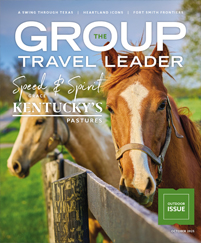
Fruit cobbler, courtesy American Grocery Restaurant
Gullah Vittles
The Carolinas make it easy for groups to tuck in their napkins and dive in.
Food — how it’s grown, selected, handled, prepared and eaten — is a culture unto itself in North and South Carolina. North Carolina believes its barbecue to be hands down the world’s best, and South Carolina’s farmers markets, farm stands and Gullah restaurants specialize in victuals tasty enough to write home about. Both states serve seafood fresh from the water as part of state-sanctioned Farm-to-Table and Fresh-on-the-Menu programs.
Throughout the South Carolina Lowcountry, the area along the coast from Georgetown to Hilton Head Island that is level with the sea, descendants of freed slaves embrace Gullah, a culture birthed in their West African roots. Based on what’s local and in season, Gullah food is stewed, grilled or roasted, and occasionally, fried. Tasty Gullah rice can be the centerpiece; it is served either as a main course with shrimp, chicken, sausage and vegetables added, or with lightly-fried shrimp, chicken or oysters.
Gullah specialties include shrimp and grits, crab cakes, gumbo, she crab soup, collard greens, okra, cornbread and sweet potato pie.
Ideally served outdoors, Gullah meals often feature an oyster roast or a Lowcountry boil, a combination of shrimp, crab, sausage, new potatoes and corn on the cob.
Charlotte Jenkins has been cooking Gullah food since the age of 9, and at her Gullah Cuisine restaurant in Mount Pleasant, groups can taste her handiwork.
Just up the coast on the North Santee River, Hopsewee, a 100-acre former rice plantation with a 1735 original Colonial home, is known for its elegant Southern teas, lunches and picnics.
To these luscious offerings, owner Raejean Beattie has recently added A Gullah Evening. After a guided house tour, Gullah storytellers and artisans give insights into their fascinating culture while groups sate their appetites at a Gullah buffet of gumbo; shrimp and grits; pulled pork; and chicken pileau, a combination of chicken, rice and sausage.
“Our storytellers’ stories reflect a passion they share for preserving Gullah culture into the next generation,” said Beattie.
Seafood
When it comes to whose seafood is best, the two Carolinas disagree. South Carolina’s candidate is Murrells Inlet, a historic fishing village south of Myrtle Beach known for its fresh “fruits des mer,” seafood markets and superb restaurants.
In 1948, Kelly Dorman’s grandparents started Lee’s Inlet Kitchen. Dorman and her husband carry on the tradition today in the 280-seat restaurant that has specialized in seafood platters, shrimp salad made from her grandma’s recipe and fantail shrimp for the past 65 years.
“We still hand-peel all our fantail shrimp,” Kelly said. “The inlet is full of oysters, clams and shrimp. We try to buy locally right off the boats. Everything we serve is East Coast, no imports.”
North Carolina’s seafood contender is Calabash, a coastal town that originated “Calabash-style seafood.” In the 1930s, fishermen would bring in their catches to the docks, and locals would meet them to cook their lightly battered, deep-fried catch in big tubs under massive oaks. The first two restaurants in Calabash began as fish camps. The third, Ella’s of Calabash, opened in 1950.
Today, the family’s third and fourth generations pile seafood platters high with flounder, shrimp, oysters, deviled crab and scallops cooked Calabash-style or boiled, with french fries, coleslaw and hushpuppies. Those who can’t decide which to order can create their own combinations.









